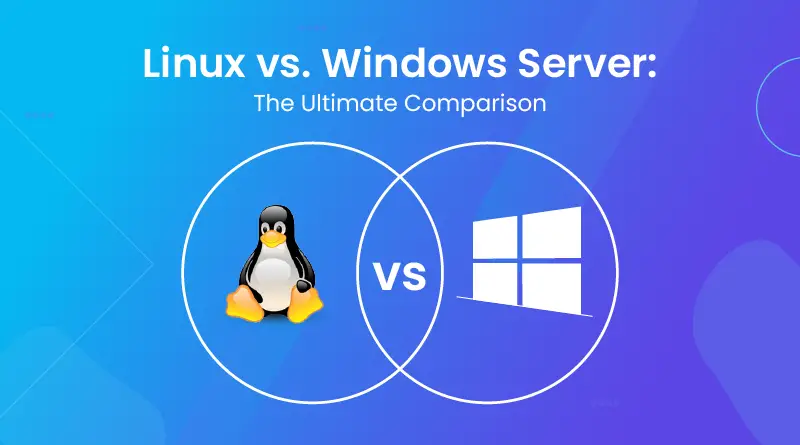Choosing the right server operating system is a critical decision for any business. Whether you’re setting up a website, managing databases, or running enterprise applications, your choice between Linux and Windows Server can impact performance, security, and costs.
So, which one is the best for your business? Let’s compare Linux vs. Windows Servers in terms of cost, security, ease of use, performance, and more!
One of the biggest reasons businesses choose Linux over Windows is cost savings.
✅ Linux – Free and open-source. No licensing fees! You only pay for enterprise support (if needed) from companies like Red Hat, Ubuntu, or SUSE.
❌ Windows Server – Requires a paid license. Microsoft charges per user or per core, which can be expensive for businesses with many users.
🔹 Verdict: If you want to reduce server costs, Linux is the clear winner.
Security is a top priority for businesses, and Linux is widely considered more secure than Windows.
✅ Linux – Fewer malware threats, strong user permissions, and an active security community. Linux admins rarely need antivirus software.
❌ Windows Server – More vulnerable to viruses, ransomware, and hacking attacks. Windows requires regular patching and antivirus software to stay secure.
🔹 Verdict: Linux offers better security with fewer vulnerabilities.
If your team is already familiar with Windows, managing a Windows Server is easier.
❌ Linux – Requires command-line knowledge. Linux admins often use SSH, terminal commands, and scripting. GUI tools exist but are not as feature-rich as Windows.
✅ Windows Server – Offers a user-friendly graphical interface (GUI). IT admins can use Remote Desktop, PowerShell, and Windows Admin Center to manage the server easily.
🔹 Verdict: If you prefer a GUI-based experience, Windows Server is the better choice.
When it comes to raw performance, stability, and resource efficiency, Linux outperforms Windows.
✅ Linux – Uses fewer system resources and runs faster on older hardware. Many of the world’s fastest servers, including Google, Facebook, and Amazon, run on Linux.
❌ Windows Server – Uses more RAM and CPU due to its GUI and background services. Performance can slow down over time if not properly maintained.
🔹 Verdict: If performance and resource efficiency matter, Linux is the better choice.
Your choice depends on the applications you need to run.
✅ Linux – Works best for Apache, Nginx, MySQL, PHP (LAMP stack), cloud applications, and open-source software.
✅ Windows Server – Required for Microsoft products like Active Directory, Exchange, SharePoint, and IIS (Internet Information Services).
🔹 Verdict: Choose Linux for web servers and open-source apps. Choose Windows for Microsoft-based environments.
✅ Linux – Highly customizable. Updates are frequent but don’t require reboots. You have full control over the server.
❌ Windows Server – Updates often require reboots, causing downtime. Less customizable compared to Linux.
🔹 Verdict: Linux gives you more control and flexibility.
✅ Choose Linux Server if:
- You need a cost-effective, secure, and high-performance server.
- You run web hosting, cloud services, or databases.
- You want a customizable and scalable solution.
✅ Choose Windows Server if:
- Your business relies on Microsoft software (Active Directory, .NET apps, IIS).
- Your team prefers a GUI-based server with easier management.
- You need enterprise support from Microsoft.
Unless your company requires Windows-only software, Linux is the best choice for most businesses. It’s cheaper, faster, more secure, and more flexible.
Which server OS does your business use? Let us know in the comments! 😊
